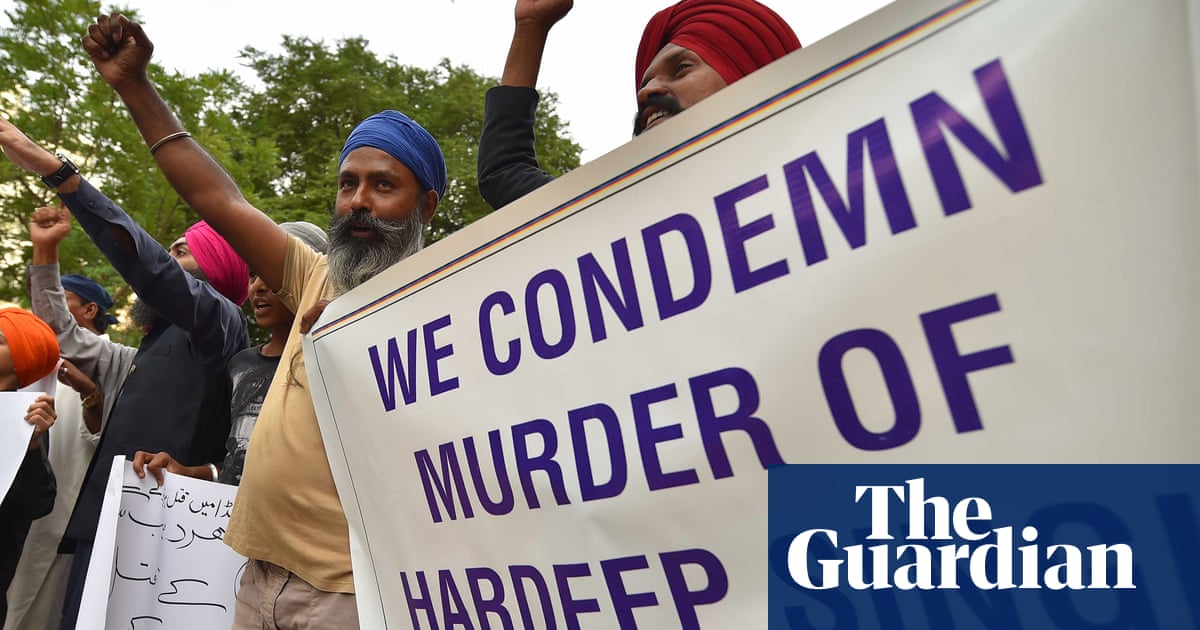
“Can you help me lift my legs,” says a Sikh woman in her 70s, who’s determined to keep her face above the water. She is preparing to swim her first length of the local swimming pool. “Yes, auntie,” I say, and dutifully place my hands under her, and suddenly, she is buoyant. In her leopard-print costume and with bangles skimming the water, she launches into a determined breaststroke, with her neck arched to the beams. She stops halfway down the lane, just before her feet no longer touch the bottom.
It’s hard to describe just how big a milestone this is for her – and for me. I’ve been teaching her to swim for six weeks, and just a few classes ago, she was terrified of getting wet, let alone being seen in leopard print and swimming lengths. Now, her confidence is unrecognisable. She is one of many south Asian women I teach who never learned to swim as a child, and who is now reckoning with their inherited view of leisure, tightly bound in cultural and gendered restrictions.
I’ve been helping the south Asian community learn to swim for the past two years – and it’s the best thing I’ve ever done. My family has always kept fit – my dad is the infamous Skipping Sikh, and my mum, the Hula Hoop Kaur. Both go into primary schools to encourage kids to get active. Needless to say, this is an atypical vocation in the Punjabi community – especially at their age, in their 70s. I’ve always been a confident swimmer, so when my mum and her close friends said they wanted to learn how to swim, I started giving them free lessons. Since then, demand has grown exponentially.
I love to see the aunties arrive poolside, glamorous in glittery, brightly coloured swimwear, and still wearing their jewellery. And each week, I get to see their confidence grow, from learning to feel comfortable standing in the water, to being able to kick their legs while holding the side. We gossip and have a laugh, and that’s all part of making learning to swim appealing. At the end of some of our lessons, the aunties invite my mum and me around for pakora and chai, and I feel like a little girl again.
For many of the women of my mum’s generation, sport and physical activity were never encouraged – and were actively stigmatised. Culturally, many Sikh children never learn to swim, because their parents never learned, and it wasn’t seen as something girls did. These missed opportunities in childhood only become more entrenched in adulthood, as women get married and start raising their own children. Among my mother’s friends, a group of time-poor women, shackled to the demands of traditional family life, swimming for leisure was a completely alien concept. So for them, learning to swim is actually quite radical.
Not being able to swim goes beyond missing out on the health benefits exercise has to offer. It’s a vital life skill, and a public safety issue that disproportionately affects Black and minority people. Research by Sport England in 2020 found that 93% of Asian adults and 78% of Asian children don’t swim. The figures are even higher among the Black community, with 95% of adults and 80% of children not swimming. We should all be outraged by these figures, which translate to higher rates of drowning deaths among these communities.
As a Sikh swimming instructor – the only one I know – I feel it’s important to open up a wider conversation about how we make our municipal spaces accessible to all. During my first swimming lesson as a child, one of the kids in my class mocked my “hairy” legs and this has always stayed with me. I know how it feels to be the only Brown girl in the water. The women that I teach see that I look like them, albeit a younger version – and that’s significant. I wear a swimming costume confidently, and put my face in the water. I stuff my hair into a swimming cap – a huge barrier for many Black women, and some Asian women, too. I conduct lessons in English and Punjabi. “I can’t put goggles on, I’m squashing my fake lashes,” one woman told me. I understand the difficulty she has in being seen without makeup and with wet hair, and the cultural significance of that. My great-aunt, who is in her 80s, was worried about putting her face in the water in case her meticulously pencilled eyebrows washed away. “No one is watching,” I told her. “Just feel free.”
Helping create a safe and familiar space for these women, and modelling what a “swimmer” looks like, allows them to experience something that should be a universally accessible pastime. “I trust you because you’re like my daughter,” one of the aunties told me, through tears, after a particularly successful lesson. For another woman in my group, swimming has been a way of discovering her independence for the first time. Her ex-husband never allowed her to learn, and after a lifetime of duty and obligations, getting in the pool has been a reawakening for her. It feels radical to help these women open their eyes to new possibilities for the first time.
What is happening in my community is significant. I’m witnessing a sort of renaissance among the south Asian aunties I teach, whose children have now left home, and who no longer want to accept the gendered restrictions they grew up with. Here, the cliche rings true: age is just a number.
Minreet Kaur is a journalist who covers Britain’s south Asian community












